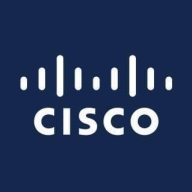

HPE OneView and Cisco UCS Manager are powerful data center management solutions. HPE OneView appears to have an advantage with its focus on automation and simplicity, effectively reducing complexity and enhancing time efficiency, which is evident through positive user feedback.
Features: HPE OneView is recognized for its automation capabilities, unifying diverse IT environments for seamless management, and providing comprehensive health control and reporting. Cisco UCS Manager is noted for flexible management, efficient hardware management, and quick server deployment through service profiles, though it lacks a performance dashboard.
Room for Improvement: HPE OneView could improve with better customization, cloud integration, faster profile deployment, and advanced reporting. Cisco UCS Manager might benefit from simplifying the deployment process, more intuitive UIs, and better third-party integration.
Ease of Deployment and Customer Service: Both systems are mainly used in on-premises environments, with HPE also supporting hybrid clouds. Users report varied experiences with technical support; HPE is praised for fast initial response but sometimes inconsistent follow-ups, while Cisco is generally reliable. Deployment is straightforward for both, but Cisco may require expertise.
Pricing and ROI: HPE OneView offers competitive, sometimes free pricing under certain conditions, yet seen as high in licensing costs, with positive ROI due to reduced configuration times. Cisco UCS Manager is considered costly but justified by its robust features and performance, often included with hardware purchases, offering a substantial return on investment despite expensive maintenance.
I can manage all LAN uplinks and fiber channel storage uplinks directly from UCS Manager.
Cisco UCS Manager provides cost savings by reducing the time support staff spend on long deployments.
With Intersight, service requests are automatically generated, enhancing the user experience and providing timely resolutions.
For a severity one case, a call ensures immediate assistance and resolution of the matter.
Regarding Cisco tech, they are pretty good.
The customer service and support have been responsive.
The technical support for HPE OneView rates as an 8 on a scale from 1 to 10, where 1 is the worst and 10 is the best.
I would give the quality of HPE OneView's technical support an eight out of ten rating, indicating good customer service and support in my opinion.
I can install the hypervisor, such as VMware, and add the servers into the cluster seamlessly.
I would rate the scalability at nine out of ten, probably.
HPE OneView is a scalable solution since you can integrate any number of servers based on your license.
HPE OneView is highly scalable, especially useful for organizations with large infrastructures.
Scalability is fine as we can add Synergy frames and extend many frames as needed.
If there's a really complex problem, I would probably give it a ten since it gets escalated quickly.
The stability of the blades is concerning; we have frequent issues with blades having memory or power issues.
HPE OneView is a stable solution that works efficiently.
It supports unified monitoring effectively but may have areas for enhancement.
We would benefit from advancements in AI that offer firmware recommendations automatically, reducing the need for human intervention and vendor communication.
It doesn't work straight out of the UCS, so someone who knows what they're doing is needed immediately, and it can be quite confusing.
While it has been improved from using Java to HTML, simplifying the tabs would enhance user experience.
The upgrade process is lengthy, requiring careful planning as we cannot match ESXi versions without aligning OneView first, leading to delays.
I believe the prices of HPE OneView should be reduced, as it is quite expensive.
From the dashboard and reporting perspective, HPE OneView could be improved by having multiple modules rather than just a single customization option.
Recently, we acquired an excellent bundle with significant discounts, with offers like buying three servers and getting one free, along with UCSC and fabric included for free.
As long as they can afford it, there is a setup cost involved.
Customers need to pay a substantial amount for the licenses, especially when monitoring a large number of servers and storages.
Our main concern is managing expenses related to the VMware licensing model which affects blade usage.
It supports ease of deployment, allowing for quick mass deployments in the data center, saving time and resources by doing so from a remote location.
Whenever there's a failure of any component, it's very easy to swap because you just disassociate that profile, remove the faulty blade, connect the new blade, and associate that profile, maintaining the same MAC address and worldwide port name.
One of the valuable features is the user interface base, specifically the C user interface.
I can monitor everything in one view, which has significantly improved operational efficiency for us.
This approach makes the upgrade process straightforward and efficient.
There is more feasibility when using HP Service Manager because, unlike other tools with predefined standards for script writing, we have the option for customization as per our choice, and dashboard reports can be customized.
| Product | Market Share (%) |
|---|---|
| HPE OneView | 1.4% |
| Cisco UCS Manager | 1.3% |
| Other | 97.3% |


| Company Size | Count |
|---|---|
| Small Business | 8 |
| Midsize Enterprise | 3 |
| Large Enterprise | 18 |
| Company Size | Count |
|---|---|
| Small Business | 22 |
| Midsize Enterprise | 15 |
| Large Enterprise | 51 |
HPE OneView is your infrastructure automation engine to simplify operations, increasing the speed of IT delivery for new applications and services. Through software defined intelligence, HPE OneView brings a new level of automation to infrastructure management by taking a template driven approach to provisioning, updating, and integrating compute, storage, and networking infrastructure. Designed with a modern, standard-based API and supported by a large and growing partner ecosystem, HPE OneView also makes it easy to integrate powerful infrastructure automation into existing IT tools and processes. Take command with HPE OneView to deploy infrastructure faster, simplify operations and increase productivity.
HPE OneView innovations provide you the industry’s best infrastructure management experience, simplifying operations for HPE BladeSystem, HPE ProLiant servers, 3PAR storage, HPE Networking and HPE ConvergedSystems.
We monitor all IT Infrastructure Monitoring reviews to prevent fraudulent reviews and keep review quality high. We do not post reviews by company employees or direct competitors. We validate each review for authenticity via cross-reference with LinkedIn, and personal follow-up with the reviewer when necessary.